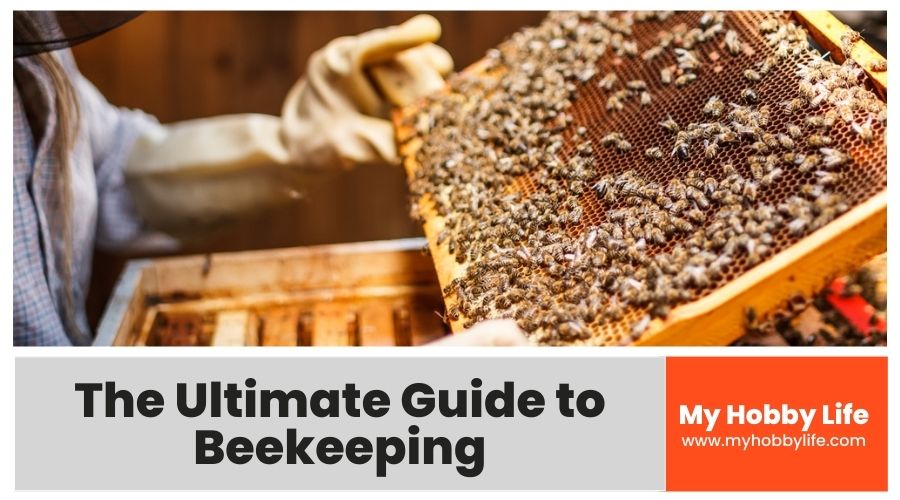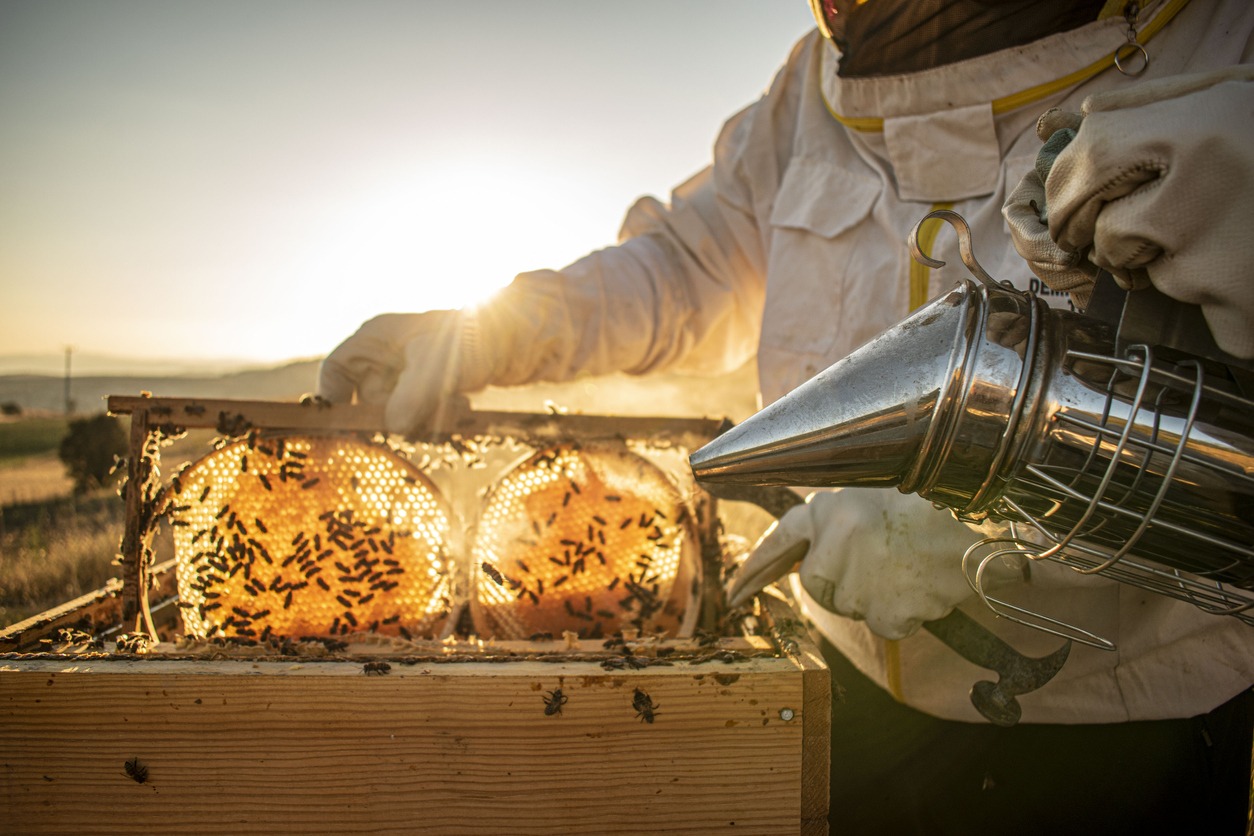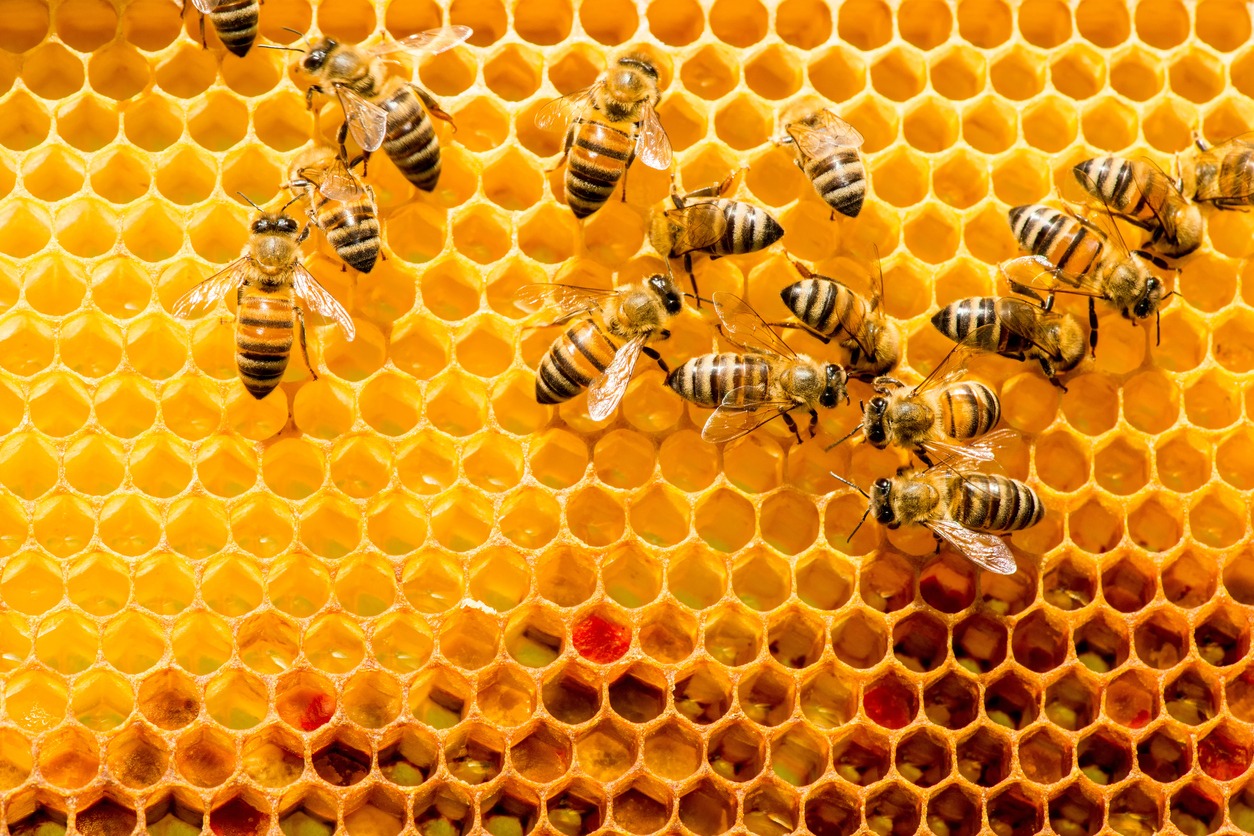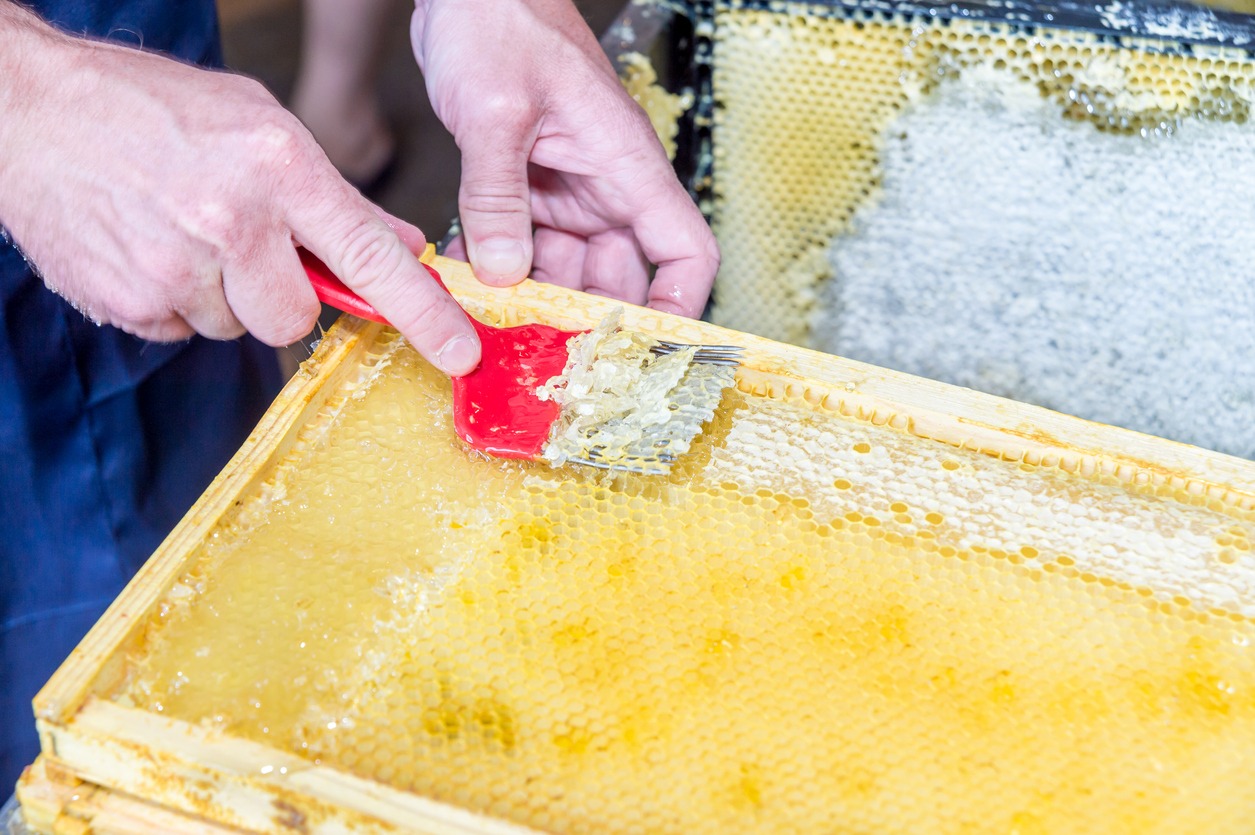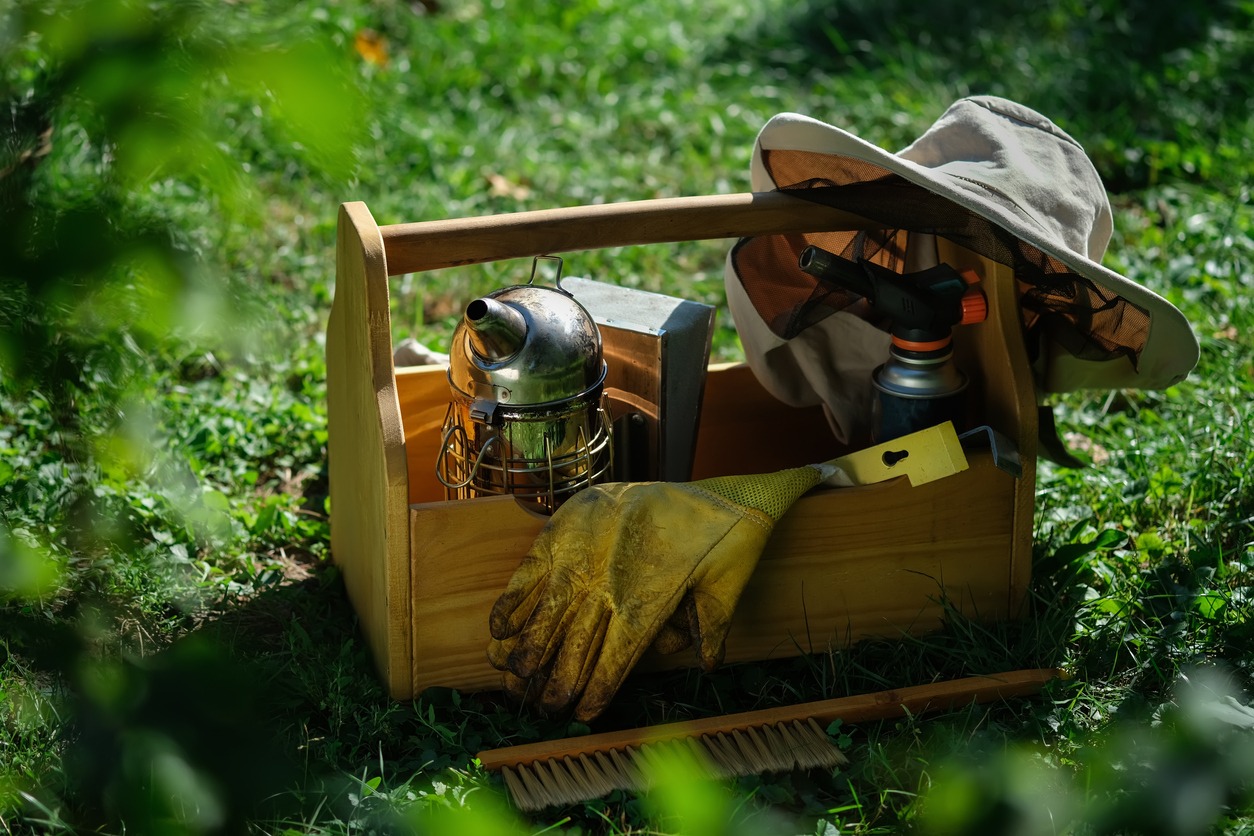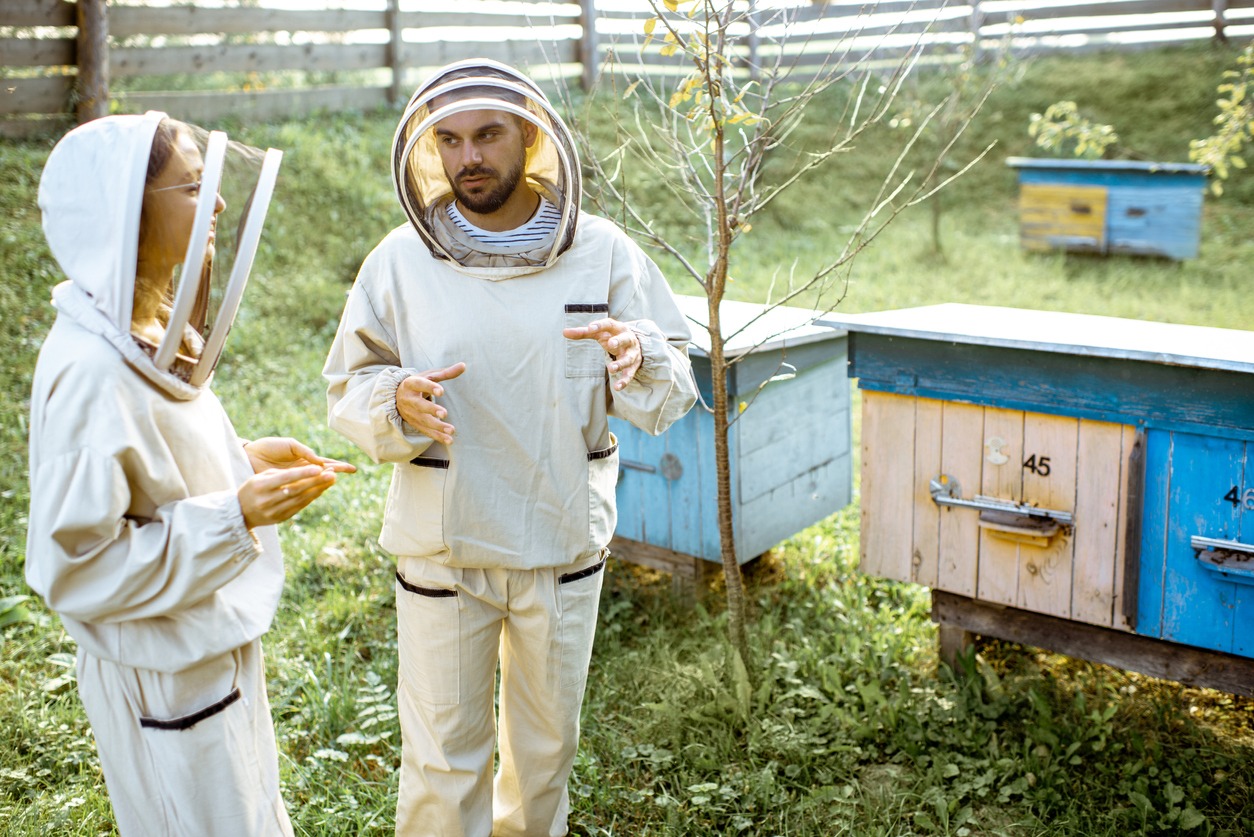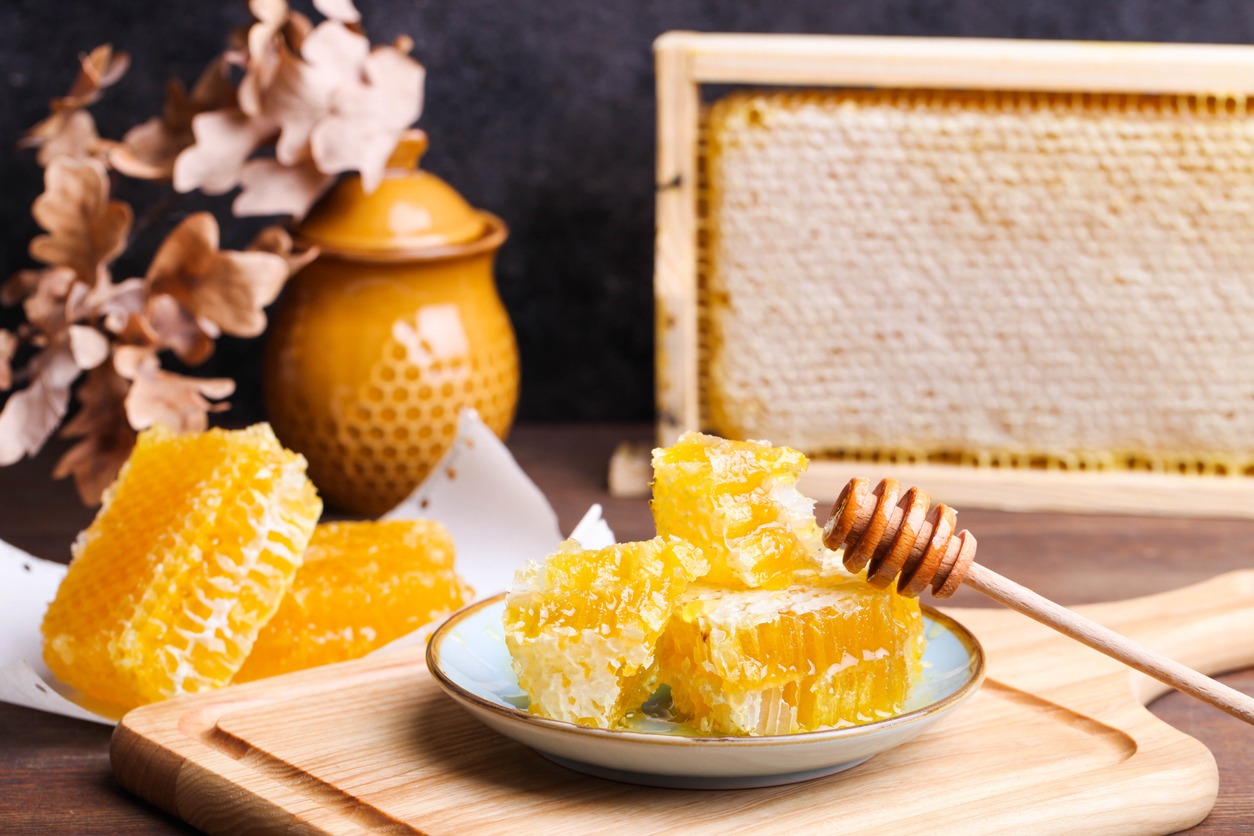Beekeeping is an old tradition; it has been practiced beekeeping for thousands of years. Prior to sugar cane and sugar beets became widely available through industrial methods, honey was the most widely used natural sugar. Ancient Egypt was the first place where bees were domesticated and used for honey production. Honey is one of the world’s healthiest foods and the most nutrient-dense sweetener; therefore, it was simple for the customer to spread throughout the globe.
Because of its alluring sweetness and high perceived value, honey attracted a large following of consumers. A long-standing human tradition, honey collection from wild bee colonies, is still carried out in numerous parts of Africa, Asia, Australia, and South America. This method of harvesting honey has grown into a profitable business. Beekeeping is an exciting and lucrative hobby, but before starting, you must consider the most important factors in beekeeping.
What is Beekeeping?
The technique of managing honeybee colonies is known as beekeeping or apiculture. The name is a mix of “APIs,” the Latin word for bee, and “culture,” the French word. Apiarists are those who work with honeybees as beekeepers. Most reasons for maintaining colonies are related to the production of honey or the provision of useful pollination services to farmers.
Another purpose of beekeeping is to ensure abundant, healthy adult honeybee populations to maximize nectar collection or honey production and provide pollination services for local food crops. In addition to producing honeybee livestock for sale to other beekeepers, some have another purpose for their honeybee colonies. Such as producing royal jelly, propolis, and other products unique to honeybees, such as bee pollen.
History of Beekeeping
Keeping a colony of wild bees is a tradition that has been around for thousands of years; however, it is unknown exactly when humans originally developed it. There’s something quite fascinating about beekeeping’s rich history. No one can say when people first tasted honey and found it delicious. Even the beginning of honey-gathering can be pinpointed. However, we know when people began deliberately raising beehives for their honey and wax production. The ancient art of beekeeping is depicted in cave paintings that have been discovered. Destroying honeybee colonies for their honey was a common practice in ancient times. Eventually, people figured out how to take good care of honeybees. This meant there was hope for a harvest that wouldn’t have to come at the cost of the hive’s survival.
The Myanmar fossils are the oldest known examples of bees. Meanwhile, the earliest evidence that humans were familiar with bees was discovered in La Cueva de la Area, or The Cave of the Spider, in the Spanish city of Valencia. The cave painting depicts a humanoid figure, drawn in stylized form, collecting honey while bees swarm around and approach him. However, the Egyptians had a more refined understanding of how to put bees, honey, and beeswax to use. In their paintings and drawings, the beekeepers smoked the hives to calm the bees and extracted honey in greater detail than in the Valencia cave paintings.
Among China’s earliest written documents is a term for bees and wasps, which can be found on oracle bones (Feng). For honey bees, in particular, the term mi-Feng was used. Honey was a popular component of traditional cures for stomach ailments and dietary guidelines when it was recommended that people eat it; thus, many farmers in the Riverside area kept and managed bee colonies.
After a few hundred years, the business had progressed to the point where there were written records of beehives, methods for domesticating wild bee colonies, and a robust market for honey, beeswax, and related items. Making candles from beeswax dates to at least 200 B.C.E., long before the practice gained traction in Europe.
The first official bee farm was documented by 158 C.E. A celebration of the honey harvest was held annually in July by the 1300s. As early as the 17th century, professionally produced books and scrolls devoted to beekeeping began to appear. Beekeepers were well-versed in the threats to their hives, such as swarms of tiny insects, and how they could mitigate those threats.
While ancient Greeks studied bees and beekeeping as a hobby, evidence suggests they didn’t maintain bees. However, the bee was a popular symbol in ancient Greek culture, appearing on coins, in Aristotle’s History of Animals, and in works of literature.
Moreover, there is evidence that the Romans engaged in the beekeeping hobby. The texts discussed not just bees and their behavior but also beekeeping practices. According to historical records, the Romans used ephemeral materials to construct their artificial beehives. For centuries, honey has been gathered from beehives and used primarily as a sweetener, particularly in alcoholic beverages like wine and milk.
Roman culture placed such a premium on beekeeping and honey harvesting that they codified elaborate legal frameworks outlining the conditions under which one might legally cultivate bees and establish ownership of a colony. Honey was also used for medicinal purposes, and the wax was put to many different uses, including making writing tablets, medical ingredients, deity molds, and candle wax. Cities gained notoriety for their honey or wax production quality due to the widespread practice of beekeeping. Until the fall of the Western Roman Empire in 476 C.E., beekeeping was a significant element of their culture.
Before the fall of the Holy Roman Empire in 1453, it was the primary driver of beekeeping throughout the Middle Ages. Many beehives were needed to produce enough beeswax to meet the demand for candles used in churches and monasteries. Beeswax was used to make things like seals and molds, but the candle-making market was what kept the company afloat. There was a religious component to the veneration of beehives and the qualities associated with bees. The Honeybee was held up as a symbol of diligence, cleanliness, and order. Most monasteries had their beehive fields since they were financially independent. As European ships sailed from coast to coast, bees began to spread their population and geographic range. By this time, Europeans had discovered North and South America and sailed around Africa to Asia.
The study and classification of bees began in the 1700s, during the Age of Enlightenment and scientific discovery. Beekeeping saw significant shifts in the nineteenth century. During this period, Reverend L. Langstroth was hard at work perfecting the Langstroth hive. His book, The Hive and the Honeybee, expanded upon the findings of previous bee researchers and became a bible for beekeepers. Of its comprehensive approach to honeybee care, it is still considered a classic today.
A Beginners Guide to Beekeeping
Until recently, beekeeping was almost exclusively done in specialized facilities called apiaries. On the other hand, beekeeping is currently the most popular pastime in the United States. It’s a fun activity for families to do together in their spare time, and it results in something sweet and satisfying to eat. It’s a time-tested ability; therefore, it usually requires a lot of time and effort before you can confidently apply it. Here are some important things you should consider in pursuing a beekeeping career or hobby.
1. Study the Essentials about Bee and Beekeeping
It is believed that the first evidence of beekeeping dates back at least 5,000 years to Ancient Egypt. However, there is a wealth of information to be gleaned from studying such an antique hobby. To be successful in your beekeeping venture, you’ll need to learn as much as possible about everything related to bees and beehives, the seasons, and inspection and harvesting methods. Fortunately, many resources are available to assist you in getting started with beekeeping, including books and instructional videos. To get your beehives off to a good start, you should familiarize yourself with everything you can about these cute little critters. Investing time and energy into learning the necessary skills in beekeeping are a great investment. More importantly, it will help you become a more knowledgeable and competent beekeeper, which will improve your hives’ health and safety. Here are the important things about bees and beekeeping that you should know:
2. Study the production of honey
Knowledge of honey production is essential for the well-being of your bees and the successful harvesting of honey from your hives. The honey-making process begins with the bees collecting nectar from flowers, continuing with the transport and transformation of the nectar, and then filling and closing the cells.
Collecting nectar from flowers
Extracting and collecting nectar from the flowers in your area is the first stage in creating honey. When worker bees reach adulthood (at 21 days), they leave the hive to search for nectar among the many flowers and blossoming trees in the area. Because the flower’s nectar is situated deep within the plant, the bees must use their long tongues to extract it. Making honey with a variety of flavors would be the next logical step. Just put your hive in an area with many acacia trees to get acacia, honey. Rosemary, manuka, and wildflowers all fall into the same category.
Movement and modification
The next step is for the worker bees to return the nectar to the hive and deposit it there. The bees’ stomachs are where they store nectar before returning it to the colony. People often call this the honey crop. The bees’ enzymes are added to the nectar inside their bellies, changing the pH of the liquid. Younger worker bees in the hive get nectar from their elders and use enzymes to break it down into simpler sugar molecules like glucose and fructose.
Filling and securing the cells
The bees will build hexagonal combs of cells inside the hive’s framework. The familiar honeycomb structure of wax is made up of these cells. The bees store the nectar/honey by filling the cells and sealing them with a wax-like material. Thus, honey can be preserved for a very long time. The removal of moisture is another step in the preparation process. The bees within will fan the air with their wings to rid the hive of excess moisture. By doing this, the bees can remove as much as 85% of the humidity from the hive. The rationale is that a drier hive will be better at conserving honey, nectar, and other interior components than a wetter one will.
Finishing touches
The enzymes and wax inside the honeycomb cells eventually bind the honey inside the jar. This is what gives honey its distinctive flavor. Raw honey, even after extraction, may still retain wax residue; as a novice beekeeper, you should know to decant the honey in a specific vessel for many days to remove the wax. That way, the coarser bits of honey can be filtered out, leaving you with purer honey.
3. Make a list of the things you will need
Knowing your financial situation and the total cost of your endeavors should be your priority. There are starter sets available on the market that include nearly everything a newbie needs to get started besides brood and bees. These kits often include everything you’ll need to get started, including the hive box, frames, feeds, and safety gear. Some kits also include manuals for new beekeepers with basic instructions.
The first bee nucleus will be your next largest investment. Nucleus colonies or nucs are the smaller hives. Packages contain bees at various ages and stages of development. There is a laying queen, lots of food, and enough workers to maintain multiple combs. These nucs can be introduced immediately into a larger hive or used as a stand-alone unit for some time. Bee nuclei cost roughly 100-200 dollars, depending on the supplier and the nuc size.
4. Participate in community activities by joining a club or group
This is the most crucial stage. A lot of newcomers think of it to spend time alone in the yard and relax. However, beekeeping groups flourish in many parts of the country, making them excellent resources for learning from others and exchanging tips. Most places have their little communities of beekeepers. These groups talk about what they’ve learned, what’s new, and what’s happening in the area. These groups are well-known for hosting seasonal fairs, which are popular attractions. People who share an interest in beekeeping can get together to give back to the community, learn from one another, sell and trade honey, compete for awards, and make new friends.
5. Selecting a Hive and related Supplies
Hive selection might be one of a beginner’s most challenging parts of beekeeping. Langstroth, Top Bar, and Warré hives are the most popular among American beekeepers. They are the most studied, most frequently used, and most found. All introductory texts will use one of these three beehives as an example. Langstroth hives are widely used because they are cheap, compact, standard in size across the industry, and convenient to access for the beekeeper. Top Bar hives are perfect for beekeepers who wish to emphasize pollination because they are simple to maintain, don’t require wooden frames, and look wonderful. The drawbacks include increased difficulty while harvesting honey, annual comb replacement by the bees, and more frequent inspections of the hive box. At the same time, Warré hives are convenient for managing large numbers of bees since they are compact, lightweight, foundationless, and easy to manage. Compared to the other two, they are rare, cumbersome to stack, and lack a complete frame.
6. Finding the best spot for your beehive
Choosing a good, sufficient, and secure location to house an apiary is one of the most crucial steps toward becoming a successful beekeeper. Before anything else, the apiary site needs to fulfill these requirements:
Appropriate amounts of food must be available near the hives
It’s important to remember that the apiary is situated in a natural habitat ideal for bees. The ideal location for an apiary would provide ample foraging opportunities for bees (nectar and pollen). That means greater spaces dedicated to canola, acacia trees, and other arid-adapted vegetation.
Clean water is available in the area
A vital requirement is safe drinking water, ideally in the form of a running stream. Bees will collect water from nearby sources to use within the hive. Honey production and colony maintenance both rely on water in the hive. Watering stations can be a convenient alternative to piped water, but keeping them clean and stocked with clean water all year, especially during the warmer months, is important.
Community Overcrowding Among Bees
Find out whether there are any existing hives in the area and how far away they are. Bee colony overpopulation is a serious issue. Having no other beehives within three kilometers of yours is ideal. The minimum required distance from other beehives is 20 meters, while the minimum required distance from roadways and residential structures is 500 meters. Learn the statutes and regulations thoroughly.
Proximity Costs to Beekeepers
The apiary also needs to be conveniently located for the beekeeper, either within walking distance or easily accessible by car.
Shade and Breeze
If you’re starting as a beekeeper, you should listen to the advice of your more seasoned colleagues and pick a flat, southerly, or southeastern-sloping area. Ventilation is essential, and other buildings shouldn’t wall off the area. The beehives should be oriented toward the sun and placed close to a tree or orchard to provide some partial shelter from the sun’s rays during summer. During the warmer months, the beekeeper’s job will be easier if the hive is shaded, and the bees will be more comfortable.
7. Putting together your first beehive
Once you have all your materials and at least one beehive, you may begin setting up your hive. The next step is placing an order for a nucleus and preparing for the change. For your bees to finish moving into your larger hive and begin making honey, you need to give them anything from seven days to a month. Providing them with food and water may be required to see them through this. Normal inspections can begin once all the bees have been assigned. Common bee parasites and illnesses should be checked for. When it comes to moisture and some diseases, certain beehives are more vulnerable than others. The more folds and crevices a box have, the more work it is to keep it in good condition. Because of this, the standard shape for beehives is a cube.
8. Ordering your bees
It’s important to remember a few things before placing an order. When starting, most people purchase nucs containing everything the bees need to set up shop in their new home and begin producing honey almost immediately. You may, however, like to invest in queens or ancillary items to complement their presence. Various tools are designed to introduce a new queen, including push-in cages, cage holders, and more. Also, there are numerous varieties of queen bees, such as the Italian Hybrid, Russian Hybrid, Saskatraz Queen Bee, Carniolan Queen Bee, Cordovan Hybrid Queen, and many others. Beekeeping groups and societies around you are a great resource for finding the regional queen supplier closest to you. The more seasoned beekeepers there will also be able to tell you which varieties have proven to be the most successful in your area.
9. Honey-gathering
You may wonder when you can start harvesting after you’ve got everything on the list. Most of the time, you should wait until about 90% of the frame cells in the honeycomb are capped. Modern beekeepers may measure the honey’s moisture content using a refractometer and collect it when it registers at 18.6 percent.
Before you extract your first batch of honey, you must devote much time to learning about the process. Don your safety gear, calm down the bees and then steal the comb from your hive to bring to your desk. Use the uncapping scratcher to scrape off the wax cap from the comb, which can then be recycled into candles or utilized in D.I.Y. beauty treatments. A honey extractor will help you carefully separate the honey from the comb, and the comb will be clean and ready to return to the hive after that. After a few days in a container, the liquid honey will settle, and you may then bottle it and enjoy it. Here is some advice that will help you in every harvest to come:
- Never be in a rush when gathering honey. Take your time and learn as much as possible about your colonies.
- It is preferable to cover larger quantities at once.
- Avoid disturbing the bees by moving the harvesting away from their natural habitat. Spaces that are enclosed and located indoors are preferable. Honey may be hard to get rid of, so it’s best to keep it out of the main living areas of your home.
- See to it that no bees have become trapped. Allow any lingering bees to leave through an open window or light source.
- Honey is considerably more manageable when it is warm, so try to harvest it on warmer days.
- Make sure you have the proper tools for the job. Don’t make things harder on yourself by using improvised tools.
- Leave the equipment close to the hives once you’re done extracting. In just a few days, the bees will have cleaned them completely.
- One helpful hint is to have a bowl of water handy during extraction for frequent hand washing. Doing so will keep the sticky honey from smearing all over you and your equipment.
Benefits of Honey
This is like being given the nectar of the gods and having no idea what to do with it. Honey is loaded with phytonutrients, strengthening the immune system and protecting against certain diseases. Honey’s antifungal and antibacterial properties make it a wonderful emergency balm for wounds, and as a prebiotic, it encourages the growth of beneficial bacteria in the gut, leading to improved digestive health.
Honey’s uses extend far beyond its sweet flavor. Because of their high water-retention capacity, they are a great choice for treating dry skin, including the scalp. Acne, pimples, and blemishes might respond well to honey’s antibacterial and antifungal properties. Honey can be used to treat small burns and speed up the healing process. Traditional remedies for coughs and sore throats include honey in hot water. Amazingly, beeswax may be used to create candles, deodorant, and lip balm.
Beekeeping exemplifies what it means to live in a world that values mutual aid and cooperation. Inviting bees into your yard allows you to reap the sweet rewards of their labor while also increasing the population of a species that is in decline.
Conclusion
Like any other form of farming, beekeeping requires knowledge, a desire to learn from mistakes, and a commitment to the best beekeeping methods. To begin, a skilled beekeeper has great patience and few high expectations. It’s unrealistic to count on honey being produced a year. Initial beekeeping requires a larger financial investment, some basic theoretical understanding, and a suitable location for the apiary. After some time and education, you can decide whether to develop your apiary or retain beekeeping as a pastime. Expect the unpredictable nature, hard effort, and immense pleasure that beekeeping gives if you step toward a larger number of hives. Always keep in mind that beekeeping is more than just a pastime.
